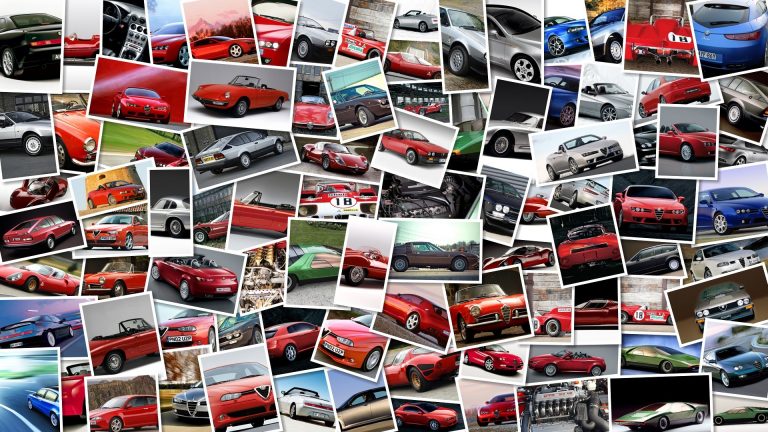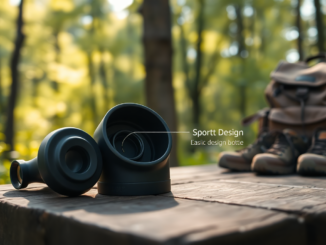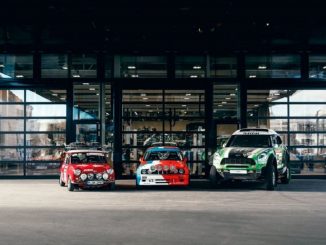
A few weeks ago we went to the presentation of the final version of the aptly called Borile Multiuso (that’s Italian for ‘multi–purpose’), a simply unique motorcycle that had already been spotted before in some of its early and provisional incarnations.
The presentation took place at the historical workshop of the diminutive Italian manufacturer, situated in the main square of the charming little town of Vo Euganeo (PD), near Venice, where we got greeted by no less than the founder and factotum of the house, Mr.
Umberto Borile, as well as the actual CEO of the company, Mr.
Alberto Bassi.
True to its name, the Borile Multiuso immediately presented itself as an extremely versatile and functional motorcycle, suitable for many different situations both on and off the road.
The bike comes with an extremely pragmatic design and is powered by a 230 cc engine that – given the low weight of approximately 84 kg of this bike– is more than capable to provide the necessary power to allow the Mutliuso to be as agile on the tarmac as it is reactive in the dirt.
The idea of this ‘all-round motorcycle’ comes from Mr.
Umberto Borile himself, who was in search for a suitable bike to take on the adventurous ‘out door trips’ with his mates on the charming Euganean Hills, and that could also fulfill a number of other tasks.
Since he could not find anything on the market that was good enough, good old Umberto decided he was going to build himself one, a light and sturdy bike like nothing we had seen before and equipped with all the accessories you would need to go in the woods and have a blast.
That’s exactly when the whole Borile Multiuso idea was born.
See the whole test and all the thumbnails after the ‘jump’.
View the full Borile Multiuso photo galleryDesignAs already noted, the key-word for what concerns the design of the Borile Multiuso is ”functionality”.
Umberto Borile himself pointed out that the Multiuso “hasn’t been designed to win any beauty contest”, it has been conceived with the clear intent to be “functional rather than beautiful”, meaning that its forms were specifically designed to fulfill certain purposes and to accommodate certain accessories, relegating the aesthetic pleasure into the background.
This choice, however, surely had a part in shaping the Multiuso that way, making it an original and easily recognizable machine that boasts that sort of ‘functional beauty’ no-frills-approach that many people appreciate so much.
The aluminum frame hugs the engine with a cradle that is connected to the bottom plate and ends up in a box-shaped element, creating a compact and robust body that lets the engine on display.
The ‘off-road’ flavor of this bike is emphasized by the choice of traditional wire wheels, measuring 21″ at the front and 18″ at the rear, both of which obviously fitted with knobbly tires.
Same goes for the color range, which includes two options: Military Green and Desert Sand.
The dual headlight is another highly distinctive feature of this model, which definitely adds up to its own personality.
Technical highlightsFor a bike that makes of ‘essentiality’ and ‘lightness’ the two of the most significant elements of its philosophy, the frame is obviously of crucial importance.
The structure weighs only 3.
8 kg and is made of aluminum, and also acts as a fuel tank (5 liters capacity) and filter casing.
The Multiuso is powered by a strong and reliable single cylinder 4-stroke 2-valve air-cooled 230 cc unit, supplied by Chinese manufacturer Zongshen, a company already known for being an all-important business partner of the Piaggio Group for the Asian markets.
This engine produces 11 kW (14.
7 hp) at 7,000 rpm and 16.
5 Nm of peak torque at 5,500 rpm, and is mated to a quick 5-speed gearbox.
The model also comes with both electric and kick start, a 26 mm carburettor courtesy of Keihin 26 and a multiple disc clutch in oil bath .
The low weight of the engine contributes to the low overall weight of Multiuso, whose curb weight is rated at about 88 kg and allow for an average fuel consumption in the extra-urban cycle of only 31 km/litre.
The chassis uses a swingarm with a ‘Cantilever’ connection that pushes on a pair of gas shocks – borrowed from the ‘down-hill’ Mountain Bike world – a solution that allows the rider to make separate adjustments for preload and compression of the rear suspension .
The rear seat subframe is also made of aluminum and contains the wiring of the electrical system, the ultralight lithium battery and is designed to fit a couple of racks on the two sides.
At the front we have a 40 mm fork courtesy of Italian specialist Marzocchi, with a steel plate that joins its sheaths and works as support for the front fender and stiffening element for the whole structure.
The triple clamps are made of high quality billet aluminum while the brakes use 220 mm discs at the front and 190 mm discs at the back that were specifically made for this model by Braking, both of which are fitted with two-piston calipers with brake pumps courtesy of Brembo.
The exhaust is built in the frame structure and is equipped with two compensation chambers with catalyst, which allows to have low emissions, a clean design and a rather characteristic engine sound.
The rideAs already stressed out a few times, the Borile Multiuso boasts its outstanding versatility as its main raison d’être, and in fact its characteristics makes it perfectly suitable in a multitude of situations.
The light weight and compact size are key to its extreme maneuverability and agility on- and off-road: the steering angle is surprisingly tight, while its refined suspension allows it to be perfectly at ease even on the most irregular surfaces.
Testing it in the vineyards around Vo (with the supervision of its maker Umberto Borile) proved that the Multiuso is a highly entertaining bike.
Facing sharp crests or challenging steep slopes and jumps is not a problem because the engine Zongshen provides an excellent response even at low revs.
The combination of all these elements together with the wide handlebars and a wheel-base of 1270 mm give the riders – even the most inexperienced ones – a feeling of absolute control on the vehicle, making the ride an absolutly smooth and enjoyable experience.
In spite of its strong ‘off road’ attitude, the little Borile proves to be suitable for everyday urban use as well: nippy and light, it combines low fuel consumption figures with a maximum speed of 95 km/h in ‘Motoalpinismo’ configuration (with knobby trial tyres and short gears) and 110 km/h in ‘Road’ configuration (with longer gears and less ‘extreme’ tyres).
Borile also offers the possibility of equipping the Multiuso with two carriers on the sides and one on the front and, in addition to that, the bike is also ready for the installation of another two compartments, one on the handlebar and one on the tank, which would increase the load capacity of the vehicle even further.
In terms of riding position, the ergonomics of the Multiuso make it compatible with any type of rider: the long and narrow saddle – which also works as a ‘cover’ for the air box – allows everyone to find his/her ideal driving position in every situation, although the bike has been deliberately proportioned to foster ’standing’ riding on the footpegs, just like on a trial bike.
The height of the saddle from the ground is a little more than 80 cm, but being only 170 mm wide it allow riders of all sizes to easily put their feet down on the ground.
Given the relative uniqueness of the Multiuso – and the consequent lack of ‘direct competitors’ – it is difficult to compare this bike with other models, but given the displacement and – especially – the price (the Multiuso is already available at 4,700 €) it does not seem so inapprpriate to make a careful comparison with the 250 cc scooters currently on the market: apart from the different design philosophy, the Multiuso is definitely lighter and more compact, it boasts a number of top-notch components and can go to certian places where those scooters would never dare to put one wheel.
The peculiar beauty of this model as well as its fascinating artisan touch make this bike much more ‘exclusive’ than regular scoots, and it would surely drag the attention of many passers-by.
Pros and ConsPros:OriginalityLightweight and CompactVersatilityLow consumptionCraftsmanship in the detailsCons:Subjective aestheticCould get some extra hpTechnical SpecsEngineSingle-cylinder 4-stroke ZongshenDisplacement: 229.
5 ccMaximum power: 11 kW (15 hp) at 6200 rev / minTorque at crank: 16.
5 Nm at 5500 rev / minExhaust system with catalytic converter and dual compensation chamberAir coolingChassisFront suspension: 40 mm Marzocchi hydraulic telescopic forkRear suspension: cantilever style alloy swing arm, two dumpers adjustable in compression and spring pre-loadWheelbase: 1270 mmCaster angle: 24 °Length: 2000 mmFront Brake: 220 mm floating disc in stainless steel by Braking, 2 piston caliperRear brake: 200 mm single steel disc by Braking, 2 piston caliperFront wheel: 21 “wire wheel, trial or dual tyre 2.
75Rear Wheel: 18 “wire wheel, trial or dual tyre 4.
00Size and weightKerb Weight: 84 kgSeat height: 815 mmMinimum seat width: 180 mmFuel tank capacity: 5 liters (1 liter reserve)Average fuel consumption in extra urban cycle: 31 km/lMaximum speed: 95 km/h in ‘Motoalpinismo’ configuration – 110 km/h in ‘Road’ configurationColours: ‘Military Green’ and ‘Desert Sand’




